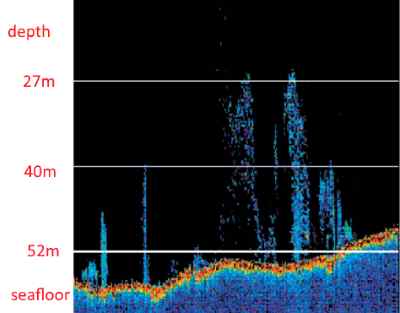Atlantic cod
Atlantic cod used to be the most important commercial fish species in the Atlantic ocean. Large traditional fisheries dates back many centuries and have been an important basis for many coastal communities along the coast of Northern Europe and North America’s eastern coast. Atlantic cod lives in the colder waters and deeper sea regions throughout the North Atlantic . Cod is the toppredator in the Atlantic , feeding on herring and sand eels, whiting, haddock, squid, crabs, lobsters, mussels, worms, mackerel, and molluscs and also on smaller cod. But the amount of cod has declined sharply.
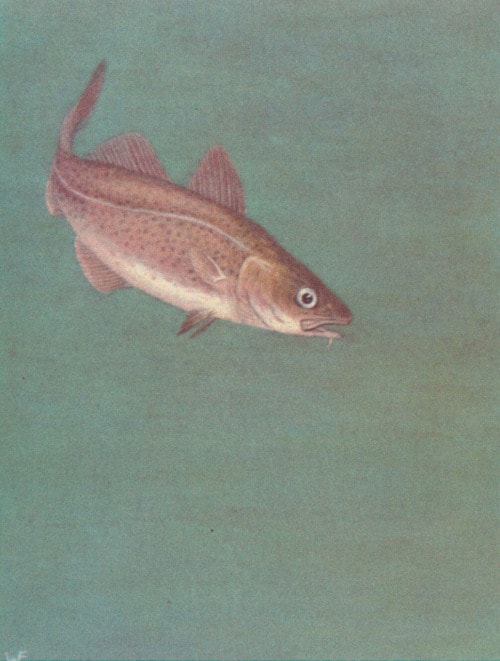
Different cod stocks with different beheavior
Atlantic cod is divided in several more or less separate stocks with different population size. Nowadays, the largest fishery is on the Northeast Arctic and Icelandic cod stocks. There is a Northsea , an Baltic and an Norwegian Stock. and there a many along the North America’s eastern coast. The decline of the cod stocks started with the 1992 collapse of the Northern cod stock in Canada setting the stage for the last 25 years of concern surrounding status of cod stocks. Cod is highly appreciated as food and is sold as fresh fillets, salted or as stockfish. Cod from aquaculture are popular in the market and often obtains higher prices than wild caught cod. Norway, Iceland and Russian Federation are by far the largest cod fishery nations. Cod from aquaculture is growing fastly in price, volume and importance.
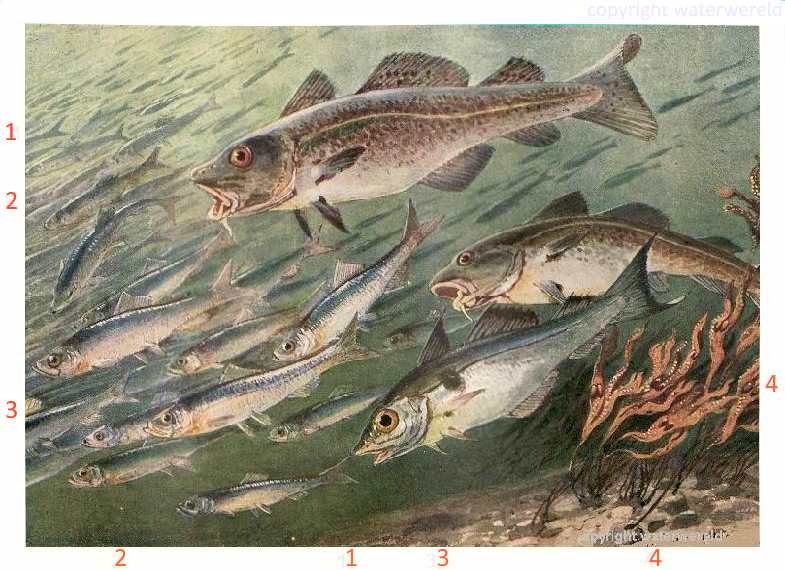

Habitat and Biology
Atlantic cod has a wide distribution on both sides of the Atlantic Ocean. At the western side it ranges from Cape Hatteras in the south to around Greenland in the north, and on the eastern cost from Biscaya in south to the Barents Sea in North. Within this area cod may tolerate summer temperatures over 20 °C and winter temperatures around zero. Even though cod in some areas, like the Gulf of Bothnia, may tolerate very low salinities (<10‰) most cod stocks experience much higher salinities (28-35‰).
Cod are shaoling fish
Cod are swimming somewhat independently , but in such a way that they stay connected, forming a social group. This is called shaolin swimming , the main advantige is that is much easier to find a partner to mate. Cod swim as a shaolin only in there reproductive period. Also : enemies can be detected easier because of the many eyes. Once an enenemy is detected they form a displiniced school, swimming all in the same direction, changing all together from direction at the same time. This is done wenn a fish net is detected.
and because of this , it is possible to catch cod with a large net. Facultative shoalers, such as Atlantic cod, saiths and some carangids, shoal only some of the time, perhaps for reproductive purposes.Shoaling fish can shift into a disciplined and coordinated school, then shift back to an amorphous shoal within seconds. Such shifts are triggered by changes of activity from feeding, resting, travelling or avoiding predators.[4]
reproduction of Atlantic cod
Age at maturity varies between 2 and 7 years Atlantic cod typically spawn over a period of less than 3 months (5) in water depth ranging from tens to hundreds of metres. Individuals are assumed to breed annually and Atlantic cod are considered to be batch spawners as only 5-25% of a female’s egg complement is released at any time during her 3- to 6-week spawning period (7). Individual females release often millions, of tiny eggs (1.2-1.6 mm in diameter), for which no parental care is provided, directly into oceanic waters .
The first stadia of cod
Cod eggs released in the ocean can travel up and down in the watercolum. This is done by varying the salt content (salanity) in the yolk (1), thus varying theire weight. (4)
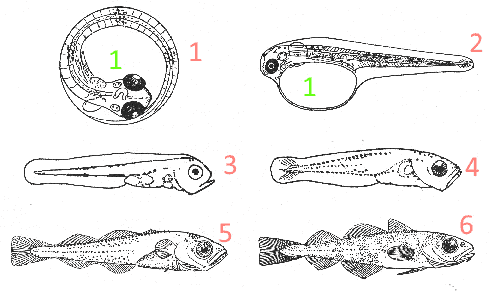
1 Egg. lives completely of the yolk. After Heincke and Ehrenbaum.
2 Larva, lives completely of the yolk, just hatched, 4 mm. After Masterman.
3 Larva, 4.5 mm. feeds on plankon. After Schmidt.
4 Larva, 9 mm. feeds on plankton. After Schmidt.
5 Fry, 20 mm. After Schmidt.
6 Young, 40 mm. After Schmidt.
The larva stadia feeds on zooplankton. In fact , these larvae feed on nauplii and copepodites of Oithona similis and Pseudocalanus species of copepods (small crustaceans) The survival of young cod depends for a large part on variations in temperature. The rising of temperature since the mid-1980s has modified the plankton ecosystem in a way that reduces the survival of young cod. (5)
cod parasites
The most important parasite is the cod worm
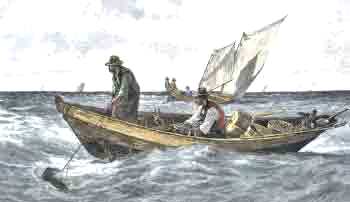
Sport fishing for cod
As cod is very scarce nowadays it is hard to catch one: Cods are attracted by baits are lugworms, squid and peeler crabs as a bait. The cod venture closer to the shore during the night.
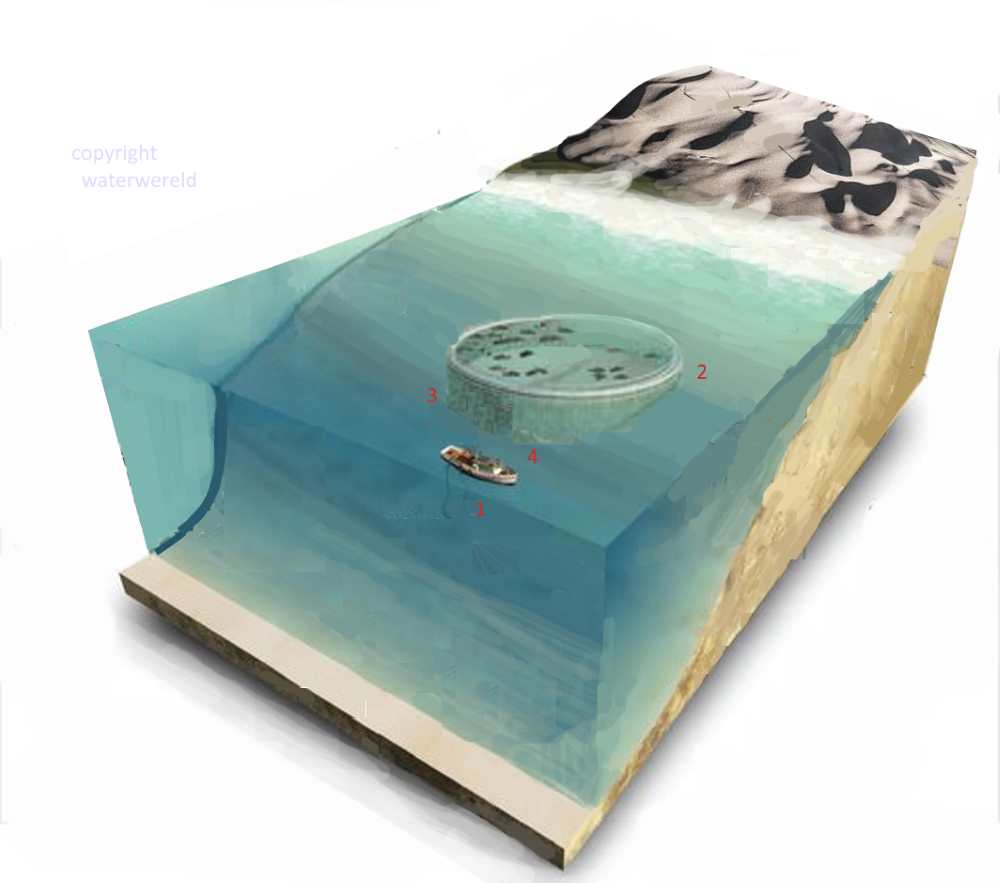
Fish farming cod
At this time juvenile production technology was further developed and large hatcheries, based on intensive production protocols similar to those used for seabass/seabream, were used.
Together with new advances in light manipulation of broodstock to achieve year-round egg production, as well as reducing the problem of early sexual maturation, the biological basis for cod aquaculture was achieved. Investments in cod aquaculture enterprises, both hatcheries and ongrowing farms began to accelerate. The cod worm or Lernaeocera branchialisBasically, there are two kinds of aquaculture: extensive aquaculture based on local photosynthetical production and intensive aquaculture, in which the fishes are fed with external food supply.
Listening to the sounds that spawning cod makes shows that they gather in vertical columns starting above the sea bottom of Placentia Bay. (9)
cod and the drumming muscles
Cod can make underwatersound by using muscles attached to the bladder, called drumming muscles. There is much difference between the sexes, males drumming muscles are much larger. Cod in captivity most frequently produced sounds in February and March associated with spawning and from September to November when the fish were very aggressive. Sounds associated with spawning increased in frequency after sunset but at other times of the year the sounds ceased at dusk.(2) Both sexes in cod have been observed to produce sound, although it is the males whose sound production is thought to play an important role in spawning, such as attracting females and holding territories(8) It is also used to warn other cods in case of danger. (3) Listening to cod can contribute a great deal to our knowledge of their abundance, distribution and behavior. Passive acoustics studies are opening the way for further, more detailed studies of their behavior, distribution and habitat use .
The future of Atlantic cod
Cod have been slow to recover from decades of over-fishing. They were almost dissapeared from the North-sea. Many fishing management measurements were issued by the European union. The quotas on cod and other fish are part of the Common Fisheries Policy (CFP) , the fisheries policyof the EU. But cod is only slowly recovering. This is due to global warming. Dr Natali Serpetti :”rising temperature showed strong negative impact on cold water species such as grey seals, cod, haddock and herring, which all declined by 2100 under the worst-case climate warming scenario. ‘Even under the best-case climate change scenario, cod and herring stocks were predicted to collapse off Scotland’s west coast.’ 6
reference
1 Walter Ferguson, Hammonds nature atlas pf America (1952)
2 Volume 18, Issue 4, 3 The function of sound production by Atlantic cod as inferred from patterns of variation in drumming muscle mass Sherrylynn Rowe and Jeffrey A. Hutchings
3 Lough and Mountain (1996)
4 The Principles of Buoyancy in Marine Fish Eggs and Their Vertical Distributions across the World , OceansSvein Sundby, Trond Kristiansen
6 article daily mail: Cod, herring and haddock could be off the menu:
7 Chambers and Waiwood 1996; Kjesbu et al. 1996.
8 Brawn, 1961
9 ICES Journal of Marine Science, Volume 66, Issue 6, 1 July 2009, Pages 1259–1263,https://doi.org/10.1093/icesjms/fsp097 Susan B. Fudge

